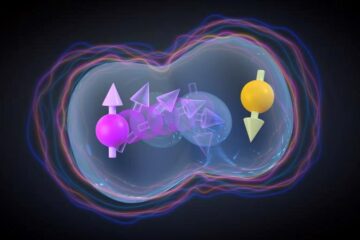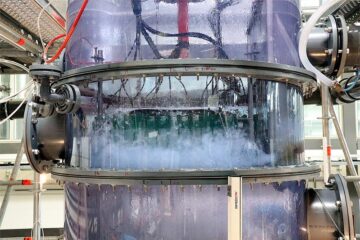Antibody therapy reduces asthma in mice

Asthma rates are rapidly increasing, particularly in children. Although asthma is mediated in part by activation of special immune cells called Th2 cells, the precise causes are unclear. Now, in a study appearing in the March issue of the Journal of Clinical Investigation, Jörg Köhl and colleagues from the Cincinnati Children’s Hospital Research Foundation report that a small allergy-inducing protein called C5a produced in the lungs can prevent or induce asthma, depending upon the timing of allergen exposure. The authors blocked the C5a receptor (C5aR) by either giving normal mice an antibody against C5aR, or by genetically deleting C5aR. The researchers then determined the animals’ response to inhalation of one of two allergens: egg ovalbumin (OVA), which fails to induce asthma; or house dust mites, which induce asthma-like symptoms relevant to human disease. The authors found that mice in which C5aR was blocked or deleted prior to exposure to either allergen developed asthma-like symptoms such as a strong Th2 cell response, mucus production, and airway inflammation. To identify the mechanism by which C5aR signaling prevents this response, the researchers looked at immune cells called dendritic cells (DCs) in the mouse lungs. C5aR blockade was found to directly increase the ratio of pro-asthma „mDCs“ to anti-asthma „pDCs“ leading to Th2 sensitization, in the absence of allergen, but even more so following allergen exposure, demonstrating that C5aR prevents cell activation and recruitment. Paradoxically, when C5aR was blocked after allergen exposure, the allergic response was dramatically prevented, and the severity of asthma-like symptoms was reduced, suggesting that C5aR increases the body’s response to asthma-inducing stimuli only in an established allergic environment.
In an accompanying commentary, Bart N. Lambrecht from Erasmus University Medical Center in The Netherlands states that these studies „show that C5aR blockade promotes Th2 sensitization upon first exposure to inhaled allergen, whereas C5aR blockade during established inflammation suppresses the cardinal features of asthma.“
Media Contact
Weitere Informationen:
http://www.the-jci.orgAlle Nachrichten aus der Kategorie: Medizin Gesundheit
Dieser Fachbereich fasst die Vielzahl der medizinischen Fachrichtungen aus dem Bereich der Humanmedizin zusammen.
Unter anderem finden Sie hier Berichte aus den Teilbereichen: Anästhesiologie, Anatomie, Chirurgie, Humangenetik, Hygiene und Umweltmedizin, Innere Medizin, Neurologie, Pharmakologie, Physiologie, Urologie oder Zahnmedizin.
Neueste Beiträge

Experiment öffnet Tür für Millionen von Qubits auf einem Chip
Forschenden der Universität Basel und des NCCR SPIN ist es erstmals gelungen, eine kontrollierbare Wechselwirkung zwischen zwei Lochspin-Qubits in einem herkömmlichen Silizium-Transistor zu realisieren. Diese Entwicklung eröffnet die Möglichkeit, Millionen…

Stofftrennung trifft auf Energiewende
Trennkolonnen dienen der Separation von unterschiedlichsten Stoffgemischen in der chemischen Industrie. Die steigende Nutzung erneuerbarer Energiequellen bringt nun jedoch neue Anforderungen für einen flexibleren Betrieb mit sich. Im Projekt ColTray…

Kreuzfahrtschiff als Datensammler
Helmholtz-Innovationsplattform und HX Hurtigruten Expeditions erproben neue Wege in der Ozeanbeobachtung. Wissenschaftliche Forschung nicht nur von speziellen Forschungsschiffen aus zu betreiben, sondern auch von nicht-wissenschaftlichen Schiffen und marinen Infrastrukturen –…





















